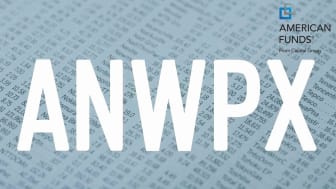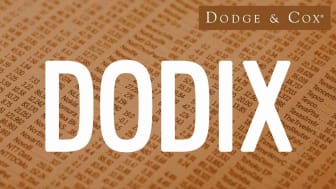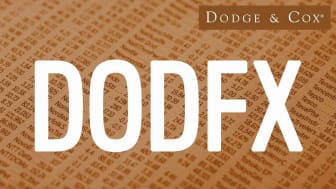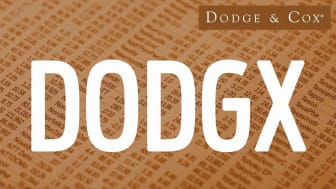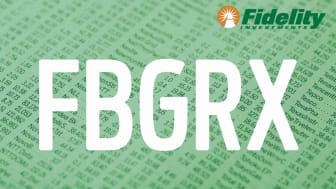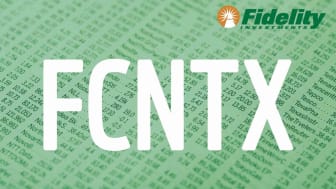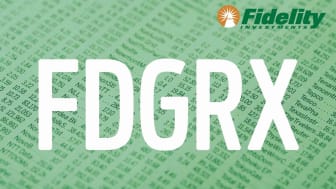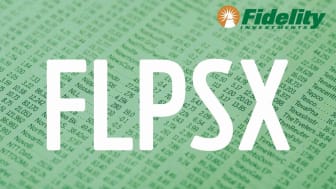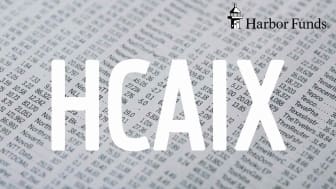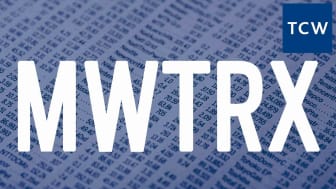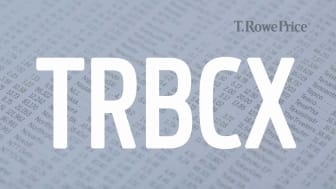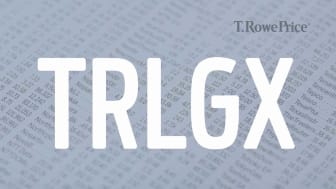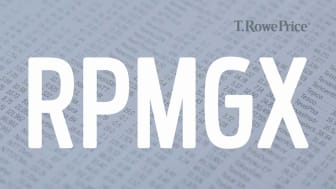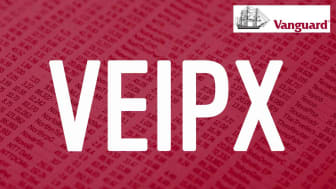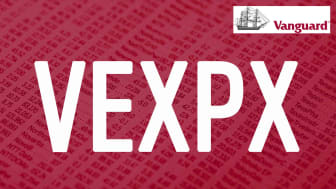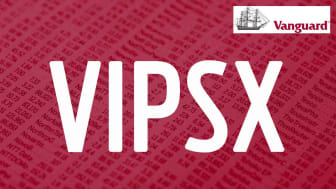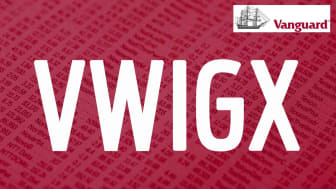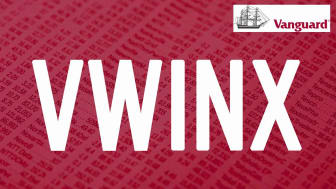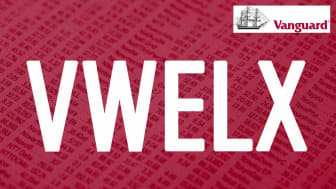
Sifting through the mutual funds in your 401(k) plan can be intimidating, the array of choices dizzying and maybe even paralyzing.
But it doesn’t have to be.
Every year, with the help of financial data firm BrightScope, a financial data firm that rates workplace retirement savings plans, we analyze the 100 mutual funds with the most assets in 401(k) and other defined-contribution plans, and rate them Buy, Sell or Hold. Our goal: to guide you toward the best mutual funds likely to be available in your workplace plan.
In the end, 23 funds, which we’ll describe in detail below, won our seal of approval. But pay some attention to the fine print: Some funds are appropriate for aggressive investors, while others are geared for moderate savers.
Also note that we didn’t weigh in on index funds, either, as choosing a good index fund always rests on three simple questions: 1.) Which index do you want to emulate? 2.) How well has the fund done in matching that index? 3.) How much does the fund charge? Generally speaking, however, we have no issues with any of the index funds listed in the top 100.
Assessing actively managed mutual funds is a different beast. We look at each fund’s long-term returns and year-by-year performance, as well as its volatility and how it fares in difficult markets. Manager tenure, fees and other factors are considered, too.
Here are the 23 best mutual funds for 401(k) retirement savers as we enter 2021, plucked out of the nation’s 100 most popular options. It’s likely that at least some of these funds are available in your 401(k). While some might be suitable for your personal situation, and others might not be, each mutual fund stands out for its quality, making it a prime choice for its respective category.
Returns and data are as of Dec. 27, unless otherwise noted, and are gathered for the share class with the lowest required minimum initial investment – typically the Investor share class or A share class. The share class available in your 401(k) plan may be different.
- Symbol: ABALX
- Expense ratio: 0.59%
- One-year return: 9.9%
- Three-year annualized return: 8.4%
- Five-year annualized return: 9.7%
- 10-year annualized return: 9.9%
- Rank among the top 401(k) funds: #30
- Best for: Moderate-risk investors in search of a fund that holds stocks and bonds
American Funds American Balanced is one of Capital Group’s best mutual funds as far as reliability is concerned. ABALX has beaten its peers – the group that Morningstar awkwardly dubs “Allocation, 50% to 70% Equity” – in 10 of the past 11 calendar years.
As its name implies, American Balanced holds roughly 60% of its assets in stocks and 40% in bonds. The stock side of ABALX holds a mix of dividend-paying and growth-oriented large-company shares. Microsoft (MSFT), Broadcom (AVGO) and UnitedHealth Group (UNH) are currently the fund’s biggest stock holdings at last report. The bond side holds a mix of high-quality corporate and government and government-backed debt.
- Symbol: ANWPX
- Expense ratio: 0.75%
- One-year return: 31.6%
- Three-year annualized return: 17.3%
- Five-year annualized return: 16.0%
- 10-year annualized return: 12.6%
- Rank among the top 401(k) funds: #57
- Best for: Investors in search of growth across the globe
Foreign stock funds are scarce among the 100 most popular 401(k) fund selections. American Funds boasts three of those, and among them, American Funds New Perspective is its best foreign-stock fund offering.
ANWPX invests in multinational firms with strong growth prospects that are poised to benefit from “changing global trading patterns.” Seven managers roam developed and emerging countries looking for growing companies that generate at least 25% of their revenues abroad and have $3 billion in market value at the time of purchase.
The managers focus on companies, not countries or regions. But in the end, more than half of ANWPX’s assets are invested in U.S. firms. European firms comprise about a quarter of the fund’s assets; Asian companies in developed and emerging countries make up roughly 15%.
New Perspectives has been one of the category’s best mutual funds over the long term, besting 91% of its peers over the past decade and 96% over the past 15 years.
- Symbol: DODIX
- Expense ratio: 0.42%
- One-year return: 9.2%
- Three-year annualized return: 6.2%
- Five-year annualized return: 5.7%
- 10-year annualized return: 4.7%
- Rank among the top 401(k) funds: #41
- Best for: Investors looking for a low-risk intermediate-term bond fund
The nine managers of this medium-maturity bond fund invest with a three- to five-year time horizon in mind and a view toward outperforming the Bloomberg Barclays U.S. Aggregate Bond index while keeping risk at bay.
So far, so good: In seven of the past 11 calendar years (including the nearly complete 2020), Dodge & Cox Income beat the AGG index.
Compared with peers, DODIX is one of the best 401(k) funds out there, too. In trailing periods over the past three, five and 10 years, Income has delivered above-average returns with below-average risk, relative to other intermediate-term core bond funds. The fund yielded 1.9% at last report.
Heading into the COVID crisis, corporate and government-backed mortgage-bonds each comprised roughly 35% of assets. But at the height of the pandemic-related market panic, when nearly all bonds became difficult to buy and sell and the AGG index lost 6.3%, the managers were readying for a buying spree. (For the record, Dodge & Cox Income lost 7.7% during the selloff.)
The managers established new positions in more than a dozen companies at what they say were “exceptionally attractive valuations,” including Anheuser-Busch InBev (BUD), Coca-Cola (KO), Exxon Mobil (XOM), FedEx (FDX), Oracle (ORCL) and T-Mobile US (TMUS). These moves increased the fund’s corporate bond holdings to 45% of assets, paid for with proceeds from the sale of some holdings in mortgage bonds and Treasuries.
Big changes are rare for this fund, especially over such a short period of time, but the managers say they “believed the uncertainty and incredible market volatility created unique attractive investment opportunities.”
- Symbol: DODFX
- Expense ratio: 0.63%
- One-year return: 1.2%
- Three-year annualized return: 0.8%
- Five-year annualized return: 6.2%
- 10-year annualized return: 4.6%
- Rank among the top 401(k) funds: #38
- Best for: Investors with long-time horizons looking for foreign stock exposure
The thing about Dodge & Cox stock pickers is that they’re a bit contrarian. The managers do in-depth analysis to find solid businesses with good growth prospects. But because they like a good bargain, they often go hunting in areas of the market that other investors are avoiding.
As a result, some investments can take time to play out, which requires patience on the part of investors.
But two additional things have been working against Dodge & Cox International Stock, which favors value-priced foreign shares, these days. Overseas stocks have lagged U.S. shares, and value-priced foreign stocks have lagged their growth counterparts for much of the past decade. For instance, growth-oriented shares in the MSCI EAFE index, which tracks foreign stocks in developed countries, climbed 7.4% annualized over the past decade, while the value stocks in the MSCI EAFE returned just 3.5% annualized.
Despite the uphill battle, International Stock has kept pace with the MSCI EAFE over the long haul. The fund’s 15-year annualized return, 4.7%, just beats the benchmark’s 4.5% return. DODFX outdoes 93% of its peers, value-oriented foreign stock funds, over that time, too.
The fund’s low expense ratio, which is 44% cheaper than the average fee charged by peers, is another plus.
- Symbol: DODGX
- Expense ratio: 0.52%
- One-year return: 5.7%
- Three-year annualized return: 6.9%
- Five-year annualized return: 11.8%
- 10-year annualized return: 11.8%
- Rank among the top 401(k) funds: #10
- Best for: Long-term, patient investors seeking a value-oriented fund
Market sentiment has worked against this value-minded fund for the past decade, as investors favored shares in fast-growing companies instead. But investors might finally be turning toward these bargain-priced stocks at last, if the last quarter of 2020 is any clue.
Dodge & Cox Stock’s healthy serving of stocks in the financial sector (26% of assets) and energy (7%) relative to the broad market was a drag in early 2020. But later in the year, these stocks rallied on sentiment that a vaccine could bolster an economic recovery.
Investors, says comanager Charles Pohl, “are starting to look through the downturn that was created by COVID.” Shares in Bank of America (BAC), Capital One Financial (COF) and Wells Fargo (WFC), for instance, all which are top-10 fund holdings, each gained more than 20% in the last quarter of 2020, beating the S&P 500.
But these short periods of returns aren’t the focus of the eight managers at Dodge & Cox Stock. They’re long-term investors who buy stocks with an eye toward holding them for at least three to five years, typically longer. They invest in companies with good long-term prospects for earnings growth and cash-flow generation, that are also cheaply or reasonably priced. Over the long haul, Stock fund compares well with some yardsticks. Its 10-year annualized return, 11.8%, beats the Russell 1000 Value index and 96% of its peers: funds that invest in large companies with bargain-priced stocks. But DODGX lags the S&P 500.
No one knows how long the recent rebound will last, but Pohl is optimistic. There’s still a wide disparity in valuation between growth and value stocks, in terms of standard measures including price-to-earnings and price-to-book value. Historically, says Pohl, that has been a good predictor of value stocks taking the lead. And an exposure to value stocks offers a good balance to the broad market, which is heavy in the fast-growing names that have done well, including Apple (AAPL), Netflix (NFLX) and Google parent Alphabet (GOOGL).
- Symbol: FBALX
- Expense ratio: 0.52%
- One-year return: 21.5%
- Three-year annualized return: 13.2%
- Five-year annualized return: 12.4%
- 10-year annualized return: 10.8%
- Rank among the top 401(k) funds: #50
- Best for: Moderate investors who want a stock-bond combination fund and are willing to put up with some volatility
Fidelity Balanced is an excellent choice for investors looking for a one-stop fund that holds stocks and bonds. Over the past five and 10 years, FBALX has been one of the best mutual funds in its category; its annualized returns outpace at least 95% of all other so-called balanced funds, which hold roughly 60% of assets in stocks and 40% in bonds.
But investors should be prepared for some added volatility. FBALX is more stock-heavy than its typical peer. At last report, Balanced had 67% of its assets in equities; the typical balanced fund, on the other hand, held an average of 58% of assets in stocks. That adds to the fund’s volatility.
FBALX has an unconventional setup. Lead manager Robert Stansky makes the big-picture decisions of how much to put in stocks and how much to put in bonds. He also oversees the fund’s eight stock pickers, who are essentially sector specialists, and four bond pickers. The bond side holds mostly investment-grade bonds and some high-yield corporate debt.
- Symbol: FBGRX
- Expense ratio: 0.79%
- One-year return: 62.5%
- Three-year annualized return: 29.6%
- Five-year annualized return: 24.7%
- 10-year annualized return: 19.4%
- Rank among the top 401(k) funds: #65
- Best for: Aggressively minded investors with long-term time horizons
Fidelity is chock full of good funds that invest in growing companies, and Fidelity Blue Chip Growth is one of its best. Over the past 10 years, FBGRX beats 95% of its peers – funds that invest in large, growing companies – with a 19.4% annualized return. It beats the 13.7% annualized gain in the S&P 500, too.
Manager Sonu Kalra, who has run the fund since mid-2009, focuses on companies with above-average earnings growth potential that the market doesn’t recognize. In particular, he looks for events that might kick the business into a higher gear, such as a new product launch, a change in executives or a turnaround strategy.
FBGRX has been one of the best mutual funds of the past year. Its 62.5% gain over the past 12 months is a chart-topping return. Tesla (TSLA), which has soared 669% over that period, was a top contributor by a wide margin. The fund is also peppered with stocks that have doubled or better in that time, including Peloton Interactive (PTON) and CrowdStrike Holdings (CRWD).
- Symbol: FCNTX
- Expense ratio: 0.85%
- One-year return: 31.5%
- Three-year annualized return: 18.5%
- Five-year annualized return: 17.8%
- 10-year annualized return: 15.3%
- Rank among the top 401(k) funds: #5
- Best for: Moderate investors looking for a tamer growth fund
Fidelity Contrafund has been a solid performer for so long that it seems many people don’t pay attention anymore. But manager Will Danoff still delivers market-beating returns, making this a top 401(k) fund selection. Over the past 12 months, FCNTX’s 31.5% return trounces the 17.0% gain in the S&P 500.
Tech and communications services stocks helped fuel the fund’s rise, particularly software and services companies such as Adobe (ADBE), Shopify (SHOP), PayPal (PYPL) and Salesforce.com (CRM). Amazon.com (AMZN), FCNTX’s top holding, helped, too.
Danoff, who has managed Contrafund for more than 30 years, has been successful in part because he has adapted his approach as his fund has aged and grown. In the mid-1990s, for instance, 700 stocks filled the fund. Today, it holds roughly 330.
But Danoff’s investment methodology is the same as it was in FCNTX’s early days: He focuses on “best-of-breed” firms with superior earnings growth, proven management teams and sustainable competitive advantages that seem overly beaten down or overlooked.
- Symbol: FDGRX
- Expense ratio: 0.83%
- One-year return: 68.3%
- Three-year annualized return: 30.4%
- Five-year annualized return: 26.3%
- 10-year annualized return: 20.6%
- Rank among the top 401(k) funds: #25
- Best for: Aggressive investors
Fidelity Growth Company is one of the best stock mutual funds in the country. Unfortunately, it has been closed to new investors since 2006. But if your workplace retirement plan offers it, that restriction doesn’t apply to you.
FDGRX’s 15-year annualized return, 15.4%, beats all but a handful of U.S. stock funds. It also beats the S&P 500 by an average of nearly 6 percentage points annually over that period.
Short-term returns are impressive, too. Over the past 12 months, the fund’s whopping 68.3% gain, lifted in part by stakes in Shopify, Wayfair (W) and Moderna (MRNA), is one of the best returns of all diversified U.S. stock funds.
FDGRX is a high-risk, high-reward fund. Steven Wymer has run it for nearly a quarter-century, looking for companies with resilient business models that will fuel rapid growth over a three- to five-year period, says Morningstar analyst Robby Greengold. That means in addition to established, giant-size firms, such as Nvidia (NVDA) and Netflix, he also owns shares in small companies such as Penumbra (PEN), an $8 billion maker of medical instruments.
- Symbol: FLPSX
- Expense ratio: 0.78%
- One-year return: 8.4%
- Three-year annualized return: 6.7%
- Five-year annualized return: 9.6%
- 10-year annualized return: 10.5%
- Rank among the top 401(k) funds: #60
- Best for: Investors looking for a solid value-oriented fund
Critics say Fidelity Low-Priced Stock isn’t what it was 20 years ago, but it’s still impressive. Over the past decade, FLPSX’s 10.5% annualized return beats 87% of its peers – funds that invest in midsize companies trading at a bargain. What works against it, in part, is that the fund used to be considered a small-company fund, and it still uses the Russell 2000 Index, which tracks small-company shares, as its benchmark.
But the fund has always been focused on companies of all sizes. Manager Joel Tillinghast launched the fund 30 years ago to invest in stocks trading at a discount whether they were small and fast growing, or big and underappreciated. The common link: cheap stocks with a share price below $15.
Today, with a bulging $26 billion in assets, FLPSX’s low-price threshold is now $35 a share. And the fund is more international than it was a decades ago. More than 40% of the fund holds foreign stocks, such as Canadian grocer Metro, U.K. property developer Barratt Developments (BTDPY), and Taiwanese electronics contract manufacturer Hon Hai Precision Industry.
Tillinghast, a legend in the business, now manages 95% of the fund’s assets. Five co-managers handle the rest. Some focus on specific sectors; others are generalists who invest across the market. Together they still apply Tillinghast’s investing philosophy, focusing on companies with solid balance sheets, that are run by good, honest executives, have stable earnings growth and trade at a discount to their view of a fair price.
- Symbol: HCAIX
- Expense ratio: 1.04%
- One-year return: 54.3%
- Three-year annualized return: 26.2%
- Five-year annualized return: 22.0%
- 10-year annualized return: 17.9%
- Rank among the top 401(k) funds: #35
- Best for: Hardy investors looking for rich rewards but have the stomach for a rough ride
Harbor outsources the day-to-day management of Harbor Capital Appreciation to managers at Jennison Associates.
Long-time investors might remember the name of firm founder and rock-star manager, Spiro “Sig” Segalas, who has behind this fund since May 1990. He has taken on five comanagers since the turn of the century, and they work together to build a 55- to 70-stock portfolio of fast-growing, dominant market leaders with above-average revenue growth prospects, healthy financials and strong pipelines for new products.
The results are consistently above average, but so is the fund’s volatility. Over the past decade, the fund’s 10-year annualized return, 17.9%, beats 89% of its peers, large-company growth funds, and the S&P 500. But it has been 20% more volatile than the index (and 9% more bumpy than the typical large growth fund.
If you can handle some turbulence, HCAIX might be one of the best 401(k) funds you can buy for 2021.
- Symbol: ODMAX
- Expense ratio: 1.24%
- One-year return: 13.9%
- Three-year annualized return: 8.1%
- Five-year annualized return: 12.2%
- 10-year annualized return: 4.8%
- Rank among the top 401(k) funds: #78
- Best for: Younger investors with long time horizons who want to tap growing stocks in developing countries.
This successful fund was once known as Oppenheimer Developing Markets. In 2019, Invesco acquired OppenheimerFunds, and the fund is now Invesco Developing Markets.
Manager Justin Leverenz has been at the helm since May 2007. He looks for firms that will benefit from growth trends in emerging markets and is willing to pay up for shares if the company has good growth prospects.
Leverenz’s approach has delivered good results over time. Over the past decade, the fund’s 4.8% annualized return beats its peers – other diversified emerging-markets stock funds, and the MSCI Emerging Markets index – by more than an average of one percentage point per year.
The fund’s top holdings are big Asian tech firms: Taiwan Semiconductor Manufacturing (TSM), Tencent Holdings (TCEHY) and Alibaba Group Holding (BABA). China, India and Russia are the fund’s top country exposures.
- Symbol: MWTRX
- Expense ratio: 0.68%
- One-year return: 8.7%
- Three-year annualized return: 5.9%
- Five-year annualized return: 4.5%
- 10-year annualized return: 4.5%
- Rank among the top 401(k) funds: #20
- Best for: Value-minded bond fund investors
Teamwork is the backbone of Metropolitan West Total Return Bond. Four bargain-minded managers make the big-picture calls on the economy, and sector specialists do the bond picking to build a diversified portfolio of high-quality, intermediate-maturity bonds.
The managers are mindful of risk, too. MWTRX got defensive early, loading up on government bonds in 2016 and 2017, which nipped returns. But its conservative position – it’s currently loaded up on Treasuries, government mortgage-backed bonds and investment-grade corporates – has been a boon in recent months. Total Return’s one-year return beats 68% of its peers, and its 10-year annualized return of 4.5% beats 67% of its peers and the Bloomberg Barclays U.S. Aggregate Bond Index.
The upshot: The managers are “patient and disciplined,” says Morningstar analyst Brian Moriarty, and that should continue to set this fund’s performance apart over the long term. MWTRX yields 0.9%.
Learn more about MWTRX at the Metropolitan West provider site.
- Symbol: TRBCX
- Expense ratio: 0.69%
- One-year return: 33.0%
- Three-year annualized return: 20.6%
- Five-year annualized return: 19.3%
- 10-year annualized return: 17.5%
- Rank among the top 401(k) funds: #24
- Best for: Aggressive investors with long time horizons unafraid to hold big stakes in tech firms
We’re big fans of T. Rowe Price Blue Chip Growth, which has been a member of the Kiplinger 25 since 2016. Larry Puglia has managed the fund since its mid-1993 launch. Since then, through three bear markets and several bull markets, Puglia has steered the fund to an 11.8% annualized return over the past 27 years, which outpaces the 9.8% gain in the S&P 500 index.
Puglia has a knack for finding good, fast-growing companies. Of course, that trade has worked in his favor of late, as those types of businesses have led the stock market’s gains in recent years. His tilt toward firms with competitive advantages over rivals and strong multiyear growth prospects leads him naturally to big tech and consumer stocks. Holdings also must generate strong cash flow, have healthy balance sheets and be run by executives who spend in smart ways to be considered for the fund, which holds more than 100 stocks.
Blue Chip Growth typically deserves a mention among the best mutual funds for 401(k) investors under Puglia, who says he has no plans to retire. But the firm named Paul Greene associate manager in early 2020, and that move has sparked speculation that it’s part of a succession plan. Morningstar analyst Katie Rushkewicz Reichart, for example, wrote recently that she thinks Puglia might step down sometime in the next two years.
Manager changes are always tough, even when they’re planned in advance. That said, Greene comes off a solid stint at T. Rowe Price Communications & Technology (PRMTX), which focuses on sectors that are in Blue Chip Growth’s sweet spot. During his six-year tenure, the fund returned 13.8% annualized. That’s an average of 10 percentage points per year ahead of its competition: funds that invest in communications sector stocks.
We’ll be watching closely.
- Symbol: PRGFX
- Expense ratio: 0.65 %
- One-year return: 35.9%
- Three-year annualized return: 20.5%
- Five-year annualized return: 18.9%
- 10-year annualized return: 16.8%
- Rank among the top 401(k) funds: #44
- Best for: Investors in search of a good growth fund
T. Rowe Price Growth Stock is one of three T. Rowe Price products on the roster of popular 401(k) funds that focus on large, growing companies (Blue Chip Growth and Large Cap Growth are the others).
What sets PRGFX apart from its siblings is its higher stake in tech stocks. Nearly 40% of Growth Stock’s assets, at last report, were invested in tech, compared with the typical large growth stock fund, which has 32% of assets in that sector.
PRGFX’s returns are solid. But they aren’t as good as Blue Chip Growth. Still, you might not have access to Blue Chip Growth in your 401(k) plan, and in that case, Growth Stock is a solid choice.
Joe Fath has managed the fund since early 2014. Over the past five years, Growth Stock’s 18.9% annualized return beats 63% of its peers, as well as the S&P 500. Fath keeps the portfolio to a trim 85 names, and Amazon.com, Microsoft, Apple and Facebook are among the fund’s top holdings.
- Symbol: TRLGX
- Expense ratio: 0.56%
- One-year return: 38.2%
- Three-year annualized return: 22.6%
- Five-year annualized return: 21.2%
- 10-year annualized return: 18.0%
- Rank among the top 401(k) funds: #59
- Best for: Aggressive investors unafraid to hold big stakes in tech firms.
You might be less familiar with T. Rowe Price Large-Cap Growth Class I than other T. Rowe Price funds, but that’s only because this institutional fund’s $1 million minimum puts it beyond the reach of most individual investors.
It’s a nifty offering. Taymour Tamaddon, who earned his stripes with a standout stint at T. Rowe Price Health Sciences (PRHSX) in the early 2010s, took over TRLGX in 2017. Since then, Large Cap Growth Class I, formerly known as Institutional Large-Cap Growth, has returned 22.6% annualized, well ahead of the S&P 500, which gained 13.5% over the same period.
Tamaddon runs a smaller portfolio than his colleagues at Blue Chip and Growth Stock, of 60 to 70 stocks. The top 10% holdings represent just over half of the fund’s assets, and you’ll recognize most of them. Amazon.com, Alphabet, Microsoft, Facebook and Apple held the top five positions in TRLGX at last report.
- Symbol: RPMGX
- Expense ratio: 0.74%
- One-year return: 24.4%
- Three-year annualized return: 17.0%
- Five-year annualized return: 16.2%
- 10-year annualized return: 14.7%
- Rank among the top 401(k) funds: #47
- Best for: Investors in search of a growth fund that doesn’t hold Apple, Microsoft or Facebook
T. Rowe Price Mid-Cap Growth has been closed to new investors for more than a decade. But if you have access to it in your workplace retirement savings plan, and you’re new to the fund, those rules don’t apply.
We’re jealous. We’ve liked this fund for a long time.
Brian Berghuis has run this portfolio of mid-cap stocks since it opened in July 1992. Since then, it has returned 13.7% annualized, which outpaces the S&P 500 by an average of 2.9 percentage points per year.
As its name suggests, Mid-Cap Growth invests in midsize companies, but Berghuis is willing to hold on to them as they grow. He homes in on firms with market values of roughly $4 billion to $30 billion. Top holding Hologic (HOLX), a healthcare company focused on women, has a market value of just under $19 billion.
RPMGX still appears to be one of the market’s best mutual funds, but like a few other top T. Rowe Price funds, it seems to be moving toward a transition. Berghuis is in his 60s. Although the firm hasn’t announced any coming change in manager, last October, the fund took on two new associate managers, Don Easley and Ashley Woodruff. They join associate manager John Wakeman, who has been with Berghuis from the start. New associate managers have been a harbinger of a manager change at T. Rowe Price. The firm likes to choreograph manager changes with long stretches of overlap.
This is a prudent move, and a responsible way to go about it. But when Berghuis retires, we might change our view of the fund until the new managers are tested and prove worthy. He’s still in place, however, and no announcement has been made. We’re staying tuned.
- Symbol: VEIPX
- Expense ratio: 0.27%
- One-year return: 1.9%
- Three-year annualized return: 6.3%
- Five-year annualized return: 10.1%
- 10-year annualized return: 11.6%
- Rank among the top 401(k) funds: #55
- Best for: Investors seeking a smoother ride in a stock fund
For more than a decade, Vanguard Equity-Income has delivered above-average returns with below-average risk. That’s in part by design. VEIPX is intended to provide current income and does so – it currently yields 2.7% – by investing in companies that consistently pay dividends. Johnson & Johnson (JNJ), Cisco Systems (CSCO) and JPMorgan Chase (JPM) are among the fund’s top holdings.
Smart stock picking by steady hands has helped, too. Michael Reckmeyer, of subadviser Wellington Management, manages two-thirds of the fund’s assets, focusing on firms that can sustain their dividend or raise it over time. Jim Stetler and Binbin Guo, of Vanguard’s in-house quantitative stock-picking group, run the rest using sophisticated computer models to ferret out stocks that meet four characteristics, including consistent earnings growth and relatively low prices.
VEIPX has been one of the best mutual funds investors could want in a 401(k) account for years. Over the past decade, it has delivered an annualized return of 11.6%, better than 93% of its peers – funds that invest in large-company stocks trading at a discount, with considerably less volatility, too.
Vanguard Equity-Income also is a member of the Kiplinger 25.
- Symbol: VEXPX
- Expense ratio: 0.45%
- One-year return: 32.3%
- Three-year annualized return: 19.3%
- Five-year annualized return: 18.4%
- 10-year annualized return: 14.2%
- Rank among the top 401(k) funds: #80
- Best for: Retirement savers looking to diversify their U.S. stock holdings with small and midsize companies
In recent years, Vanguard Explorer has turned in a better-than-average performance. In fact, in each of the past three full calendar years – 2017 to 2019 – this small- and midsize-company stock fund has outpaced the small-company index, Russell 2000; the midsize company benchmark, Russell Midcap; and the typical fund in its Morningstar peer group, which invests in small, growing firms.
The sustained turnaround is one reason we upgraded VEXPX’s rating to a Buy after several years of assigning it a Hold.
That said, a few things about the fund still trouble us. Size is one. Explorer, with $17 billion in assets, is the biggest actively managed small-company stock fund in the country. Too much money can hamper returns, especially for funds that focus on small- and mid-cap stocks. When such a fund tries to make trades in shares that typically see little activity, they may move share prices – up when buying, down when selling – in ways that can hurt results.
Asset bloat is to blame in part for another concern, too: the number of subadviser changes at the fund. Vanguard’s solution for outsize assets is to carve up and dole out pieces of the fund to different advisory firms. But if the mix of firms produces ho-hum results, Vanguard swaps out one subadviser for another. At Explorer, Vanguard has made 14 such partial manager changes over the past decade.
Time will tell if current arrangement brings strong results and warrants no changes, or if more manager shifts may be afoot. VEXPX had a tough time staying ahead of its peers in 2020, though it beat the Russell 2000. And over the past five years, its five-year annualized return, 18.4%, beat 58% of its peer group – funds that focus on fast-growing small-company stocks.
- Symbol: VIPSX
- Expense ratio: 0.20%
- One-year return: 10.7%
- Three-year annualized return: 5.9%
- Five-year annualized return: 4.8%
- 10-year annualized return: 3.6%
- Rank among the top 401(k) funds: #70
- Best for: Nearly retired or retired investors who want to guard against inflation
Inflation is not an imminent worry, but expectations for it are rising. Indeed, over the near term, we have a moderate view on rising prices for goods and services. In 2020, Kiplinger expects 2.1% inflation – higher than the 1.2% rate in 2020, but still below the 2.3% rate logged in 2019. However, the Fed’s easy-money policies mean high inflation is a likelihood in the future, say many market analysts.
Vanguard Inflation-Protected Securities, which is actively managed, invests in Treasury Inflation-Protected Securities (TIPS). These inflation-protected bonds act as an insurance policy against rising consumer prices. The securities pay a fixed coupon rate on top of the principal that is adjusted for inflation and come with the full faith and credit of the U.S. government. Like actual TIPS these days, VIPSX currently sports a negative yield, of -1.2%.
TIPS matter more for investors who are already retired than for those who are early in their careers. While a retiree might hold 10% of her assets in TIPS; those just beginning their working life might have none or no more than 1% of their assets in TIPS. For investors in the middle of the careers, an allotment of 2% to 5% is more than enough.
- Symbol: VWIGX
- Expense ratio: 0.43%
- One-year return: 56.4%
- Three-year annualized return: 21.5%
- Five-year annualized return: 20.8%
- 10-year annualized return: 12.1%
- Rank among the top 401(k) funds: #40
- Best for: Foreign stock exposure
Like other Vanguard funds with sizable assets, Vanguard International Growth experienced its own version of manager musical chairs in the early 2010s. But by mid-2016, the fund had slimmed its roster of three subadvisers to just two – Baillie Gifford and Schroders – and the lineup is proving to be a winning combination.
Over the past three years, VWIGX’s annualized return of 21.5% beats 95% of its peers and is well ahead of the 4.4% three-year average return in the MSCI ACWI ex USA Index, which tracks stocks outside the U.S. in emerging and developed countries.
The firms, both U.K.-based, have slightly different approaches. Baillie Gifford, which runs roughly 60% of the fund’s assets, is willing to pay up for stocks with explosive growth; Schroder’s ideal stock is underappreciated but growing fast.
Emerging-markets stocks make up 18% of the portfolio. That includes the likes of Tencent and Alibaba, as well as Meituan Dianping (MPNGY), a Chinese shopping platform for domestic consumer products, and Argentine online auction and e-commerce company MercadoLibre (MELI). Management should be able to keep VWIGX among the best mutual funds in this international category.
- Symbol: VWINX
- Expense ratio: 0.23%
- One-year return: 7.8%
- Three-year annualized return: 7.0%
- Five-year annualized return: 7.7%
- 10-year annualized return: 7.8%
- Rank among the top 401(k) funds: #95
- Best for: Conservative investors interested in owning more bonds than stocks in a single fund
Bonds take center stage in Vanguard Wellesley and make up more than 55% of assets, while stocks play a supporting role with roughly 40% of assets. Cash and other assets round out the rest of the fund.
The same firm that manages some of Vanguard’s best actively managed funds, Wellington Management, also runs this fine fund. Michael Stack and Loren Moran pick the bonds, focusing on A-rated corporate credits. Michael Reckmeyer, the whiz behind Vanguard Equity-Income, picks the stocks, finding high-quality, dividend-paying stocks with a yield higher than that of the S&P 500 at the time of purchase. (He’s likely to sell if the yield falls below that average.)
Over the past three years – the period this team has been in place at Wellesley Income – VWINX’s 7.0% annualized return beats 70% of its peers, which are funds that allocate roughly 40% to stocks.
- Symbol: VWELX
- Expense ratio: 0.25%
- One-year return: 9.7%
- Three-year annualized return: 9.1%
- Five-year annualized return: 10.4%
- 10-year annualized return: 9.8%
- Rank among the top 401(k) funds: #8
- Best for: Moderately conservative investors looking for a 60% stock/40% bond portfolio
For years, Vanguard Wellington, another Kip 25 member, has delivered to its investors. Over the past 15 years, for instance, the fund’s 8.2% annualized return beats 90% of its peers – funds that invest roughly 60% of its portfolio in stocks and 40% in bonds.
VWELX’s managers have changed, but we’re not worried. The new-guard members are longtime Wellington veterans. Bond picker John Keogh left in 2019, but his colleagues Michael Stack and Loren Moran, who had been named co-managers in 2017, were already in place. Meanwhile, Daniel Pozen, who has been with Wellington since 2006, stepped in for stock picker Ed Bousa in June.
We’ll be watching the new team closely in the coming months, as there might be small tweaks at the margin to the portfolio. But Wellington says Pozen will continue to focus on high-quality, dividend-paying companies with strong balance sheets and competitive advantages that can fuel dividend hikes over time. The bond managers, who have been running their side of the show since 2019, have crafted a portfolio of mostly A-rated U.S. corporate bonds and Treasuries.

